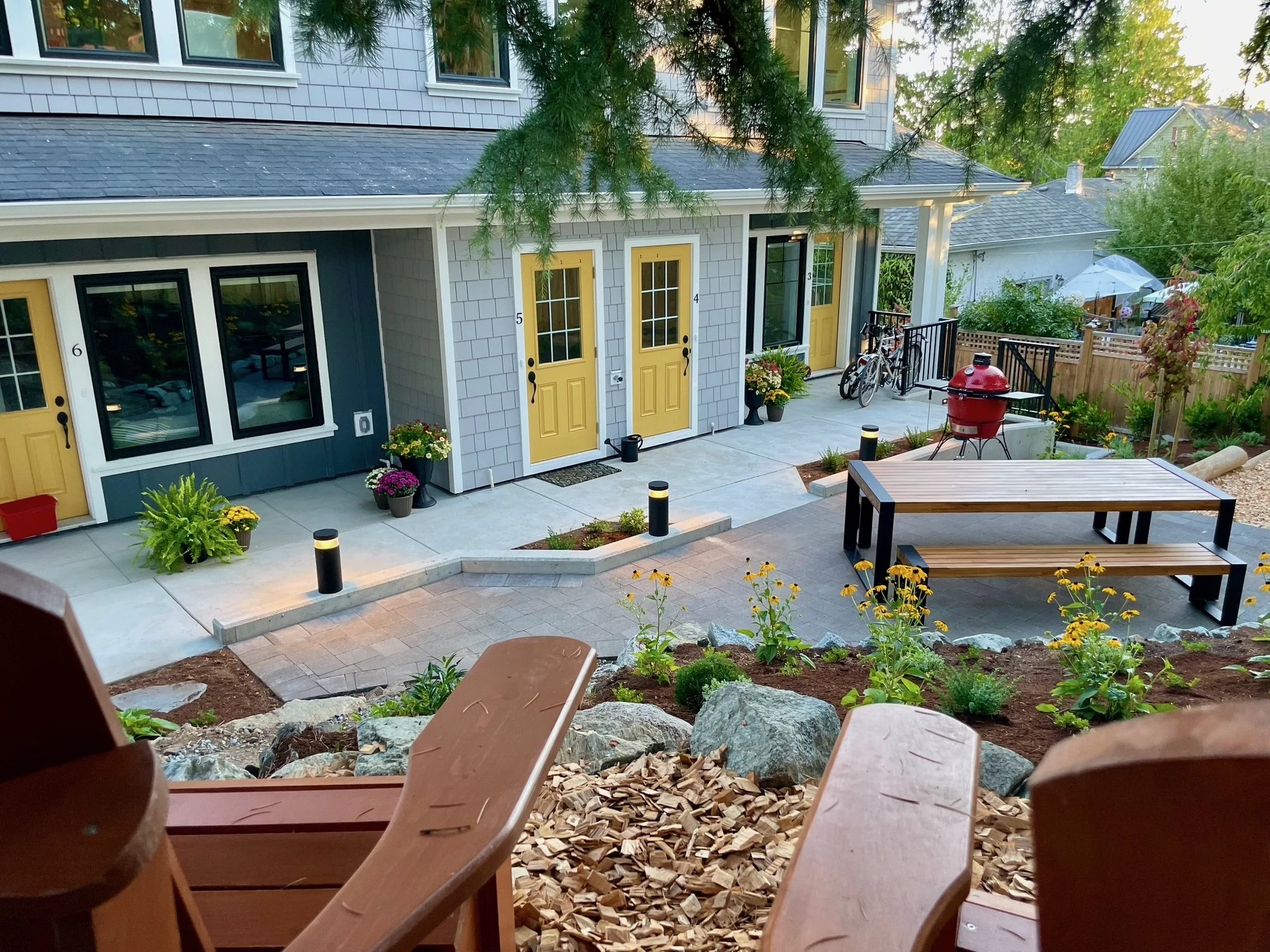Designing for Community
These are the front doors at Kindred.
They’re on the back of the building, opening onto the shared community green space. Here’s why:
Connecting Inside and Out
Convenience is king. When accessing outdoor social spaces is easy, people actually use them. When they’re out of the way, they get ignored. By opening homes directly onto a shared green space, the outdoors becomes a natural extension of daily living — no pre-planning required. It creates true seamlessness. These spaces aren’t just “nice to look at” — they’re used, lived in, and loved.
Great for Play
A safe, comfortable green space gives kids the freedom to play without planning or supervision. Even better, it brings children from different families together. The best entertainment for kids is still other kids — no screens required. And while they’re having fun, they’re also developing social, emotional, and early leadership skills. Plus, children add so much energy and vibrancy to a place — drawing more people in and reinforcing social connectedness.
And parents — this means you can spend more time being an adult and less time keeping constant watch. Unsupervised play is good for the whole family!
Creating Many Small Interactions
We are social animals. We have a basic human need to feel like we belong to a group — that we have a “tribe” we identify with.
When your front door opens onto a shared gathering space, and you naturally pass through it each day — whether you’re going for a walk, commuting to work, or taking out the trash — it creates countless little opportunities to bump into your neighbours. These small, everyday interactions are the foundation of "social integration" — that sense of familiarity and belonging to a community.
This isn’t about being extroverted or a social butterfly. We’re all simply happier, more fulfilled people when we feel like we know — and can count on — our neighbours.


